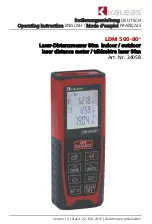
17
TI 11B08A01-01E
l
Protection gas (instrumental air) pipe
This is the pipe for supplying air to the analyzer for purging pressurized enclosures.
An air pressure of 350 to 900 kPa (500 to 900 kPa for FPD) is required. Use general instrument
air as the source and connect the piping to the analyzer PURGE AIR port. A pressure regulator
should be installed in-between.
l
Installation site and environment
The analyzer specifications allow it to be used in hazardous areas as defined by DIV1, GPS B,
C & D, T1, T2, T3, T4 (FM, CSA) or Zone 1 IIB + H2T1, T2, T3, T4 (ATEX, IECEx, NEPSI, TIIS).
However, never install the analyzer in an area where dense explosive gas exists for a long time.
For the class of hazardous areas:
For FM, refer to Article 500 of the National Electrical Code (NEC).
For CSA, refer to Section 18 of CSA C22.1, Canadian Electrical Code (CEC).
For ATEX or IECEx, see IEC/EN 60079-10-1.
For NEPSI, see GB 3836.14.
For TIIS explosion protection, r
efer to Article 1 (15) to (17) of the Constructional Requirements for
Electrical Equipment for Explosive Atmospheres (Japanese only).
l
Wiring works
<FM>
WARNING
•
All wiring shall comply with National Electric Code ANSI/NFPA 70 and Local Electric Codes.
•
In a hazardous area, use conduits for wiring in the protection system or to electronics
sections.
CAUTION
• The unused electrical connection ports should be closed with an appropriate flameproof-
certified plug.
•
Analyzers have pressurized enclosures. The cable end should be sealed in order to
maintain pressure to the pressurized enclosure. Otherwise, power is not supplied to the
electronics section.
<CSA>
WARNING
•
All wiring shall comply with Canadian Electric Code CSA C22.1 and Local Electric Codes.
•
In a hazardous area, use conduits for wiring in the protection system or to electronics
sections.
Sep. 07, 2017-00
















































